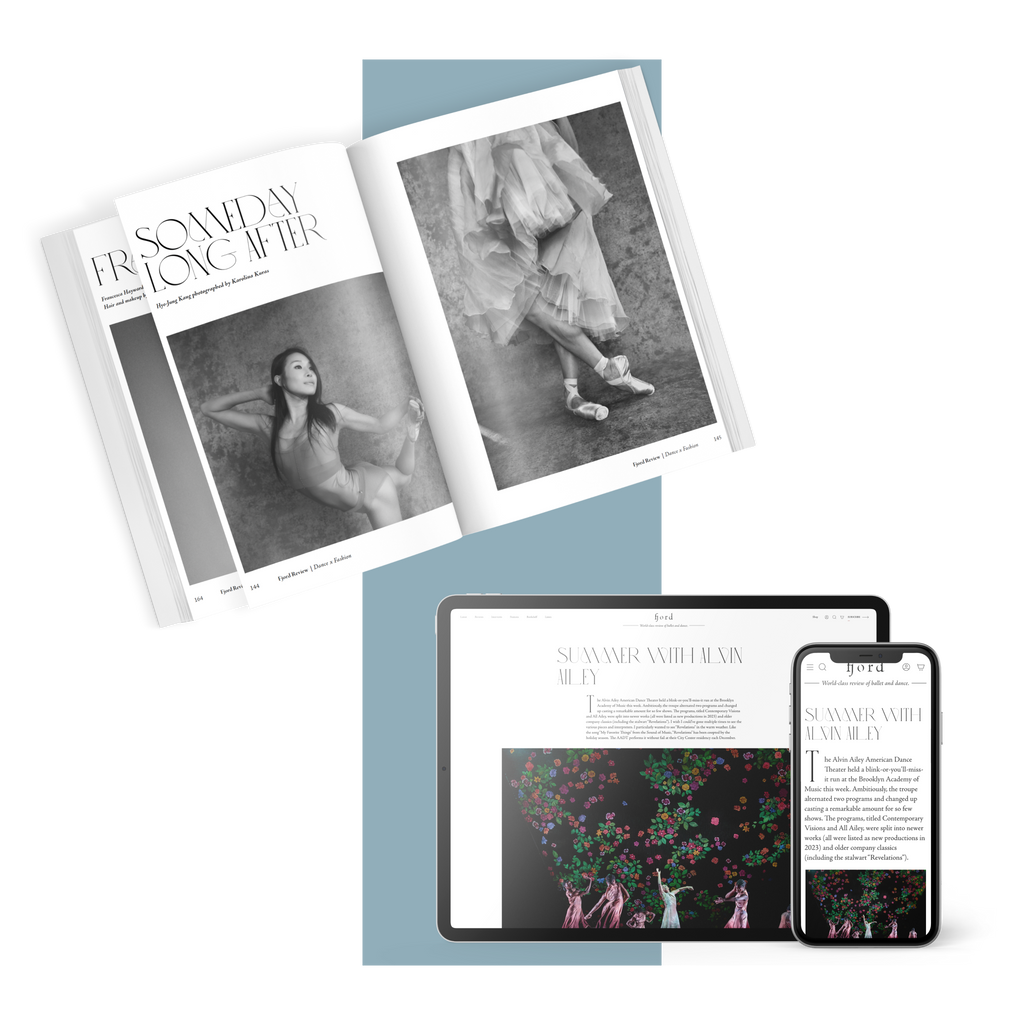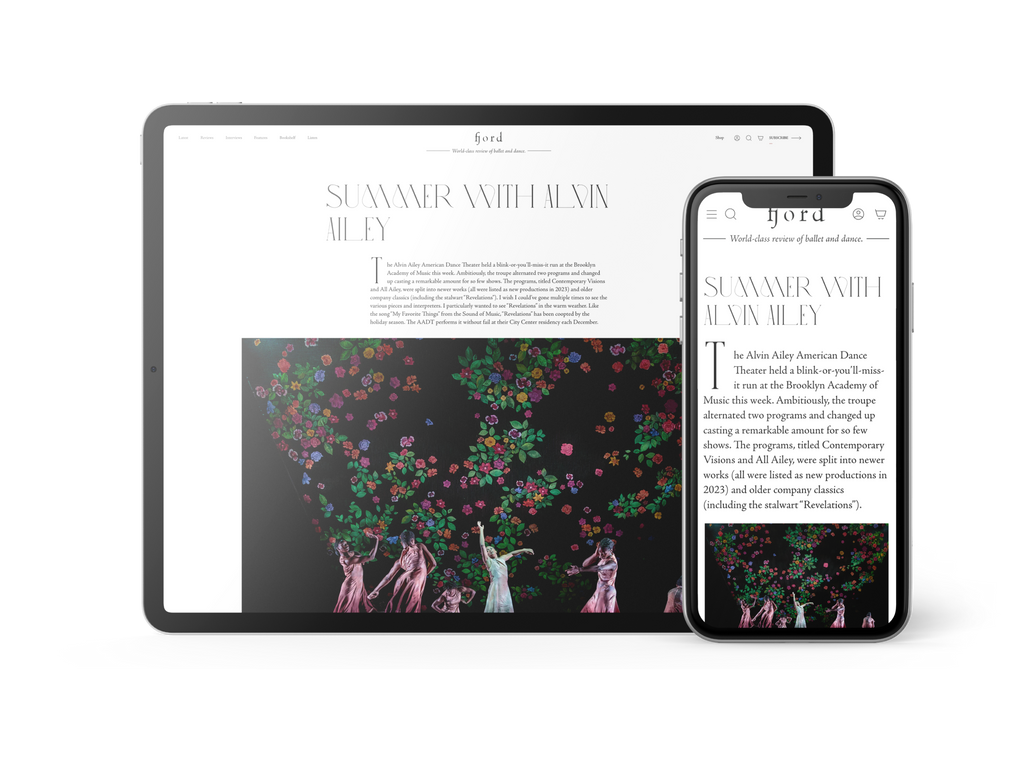Spellbound
Two performers crawl in on hands and knees wearing neon green, hooded coveralls—the lightweight papery kind made for working in a sterile environment—and clusters of balloons pinned to their backs.
Plus
World-class review of ballet and dance.
We enter off the commercial retail strip of Broadway into a whimsical garden of cardboard cut-outs painted in shades of neon pink, orange, and green by the artist Mimi Gross. The gleaming wood floor of the fully functional dance studio is now bordered with flowering hedges, mirrored wall draped in leafy boughs, the glass itself painted as an enchanted forest. It all seems to quiver under the glow-in-the-dark lighting design of Lauren Parrish. As if a salve for a troubled and contentious world, Douglas Dunn has turned his SoHo loft into a lush “Garden Party,” filled with poetry and music devoted to love. His take on the matter is delivered with a wit so droll, we’re not sure whether the sentiment is genuine or parody. Perhaps at 80, Dunn has the perspective necessary to give us a little of both. With a history rooted in the 1970s spontaneous experiments of Grand Union along with the precision and control of Cunningham technique, his artistic breadth is considerable.
Performance
Place
Words

Douglas Dunn (center), Alexandra Berger, Janet Charleston in “Garden Party.” Photograph by Jacob Burckhardt


“Uncommonly intelligent, substantial coverage.”
Your weekly source for world-class dance reviews, interviews, articles, and more.
Already a paid subscriber? Login
Two performers crawl in on hands and knees wearing neon green, hooded coveralls—the lightweight papery kind made for working in a sterile environment—and clusters of balloons pinned to their backs.
PlusWill Rawls makes boundaries visible by defying them. Known for the disciplinary and topical range of his projects, the choreographer, director, and performer approaches issues of representation in “[siccer],” a multi-part, multi-site work co-presented by L’Alliance New York’s Crossing the Line Festival. A live performance at Performance Space New York accompanies a multimedia installation at the Kitchen, a book published by Wendy’s Subway, and an album published by the artist. With a creative process reaching back to 2018, the work delves explicitly into pandemic-era energies and inertias with focused intimacy and a pervasive sense of instability.
PlusIt is always interesting when multiple theme steps emerge over the course of a mixed repertory evening, but it is uncanny on one featuring five different ballets, each with a different choreographer and composer, covering a twenty-year span (2005-2025).
PlusZvidance premiered its new work “Dandelion” mid-November at New York Live Arts. Founded by Zvi Gotheiner in 1989, Zvidance has been a steady presence in the New York contemporary dance scene, a reliable source of compositional integrity, and a magnet for wonderful dancers.
Plus
comments